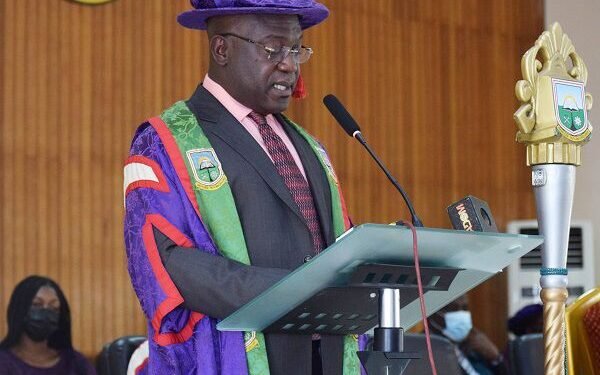Dr Ernest Addison, the Governor of the Bank of Ghana (BoG), has indicated that Ghana’s banking sector has been significantly transformed and continues to expand as a result of the recapitalization and comprehensive regulatory reforms undertaken by the Bank of Ghana.
According to the Governor, as if by some divine design, the reforms repositioned banks in the industry with strong capital buffers before the 2020 COVID-19 pandemic hit.
Dr Addison revealed that the Bank of Ghana granted macro prudential regulatory reliefs to ease liquidity constraints within the financial sector after the shocks suffered as a result of the reform. He noted that “to a large extent, these supportive policies, together with stringent supervision and regulation, ensured that the banking sector remained sound and well-capitalised with strong growth in total assets, investments and deposits, despite the challenging pandemic environment.”
Dr Ernest Addison thus used the balance sheet of banks to validate his claim. He pointed out that the strong liquidity flow and the percentage growth in assets, lend credence to the reform.
“The size of the balance sheet of the banking system continues to expand. In the first ten months of the year, total assets increased by 16.1 percent year-on-year to GH¢173.8 billion. Total deposits grew by 17.2 percent on an annual basis to GH¢117.4 billion, supported by strong liquidity flows, while the gradual improvement in gross advances has continued, with 8.9 percent growth at end October 2021 compared with 5.2 percent at end-June.
“The industry’s Capital Adequacy Ratio of 19.8 percent as at end-October 2021 was well above the current regulatory minimum threshold of 11.5 percent. Profitability in the industry was strong, with a 21.8 percent annual growth in profit before tax to GH¢6.0 billion at the end of October 2021.”
Dr Ernest Addison
The Regulatory Reliefs to Banks Remain In Place
The BoG Governor averred that the macro prudential policy measures and regulatory reliefs implemented at the onset of the pandemic remained in place to support a more robust recovery of the economy. However, he noted that the expected boost to private sector credit growth has been sluggish, amid relatively sticky lending rates in the banking sector.
He suggested that the recently published Annual Percentage Rates (APRs), which reveal actual lending rates in the banking sector, is on the higher side and not favourable to the private sector.
“The average base rate charged small and medium enterprises on a 1-year loan ranged between 19.5 percent and 30.4 percent at the end of September 2021. On all counts, these rates are very high and have proven inimical to private sector credit expansion that was expected from the regulatory reliefs, even considering the lingering uncertainties surrounding the pandemic. Annual growth in private sector credit was 10.1 percent in October 2021 compared with 13.4 percent in October 2020.”
Dr Ernest Addison
Dr Ernest Addison further noted that in real terms, private sector credit contracted by 0.8 percent compared with 3.0 percent growth over the same comparative periods.
“As regulators, we expect that as the growth momentum gains traction, supported by COVID-19 vaccination efforts, private sector credit will rebound.”
Dr Ernest Addison
READ ALSO: Presidential Health Advisor Hints on More Vaccine Delivery























